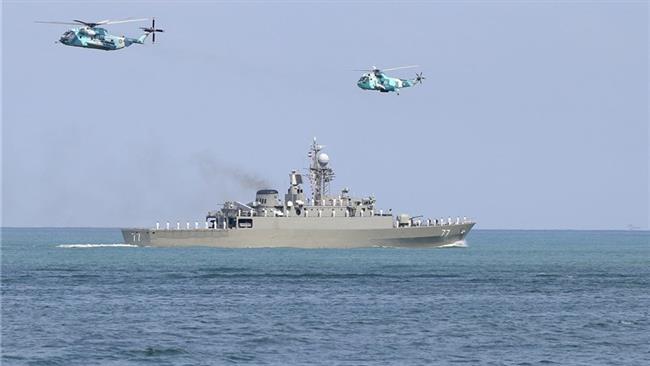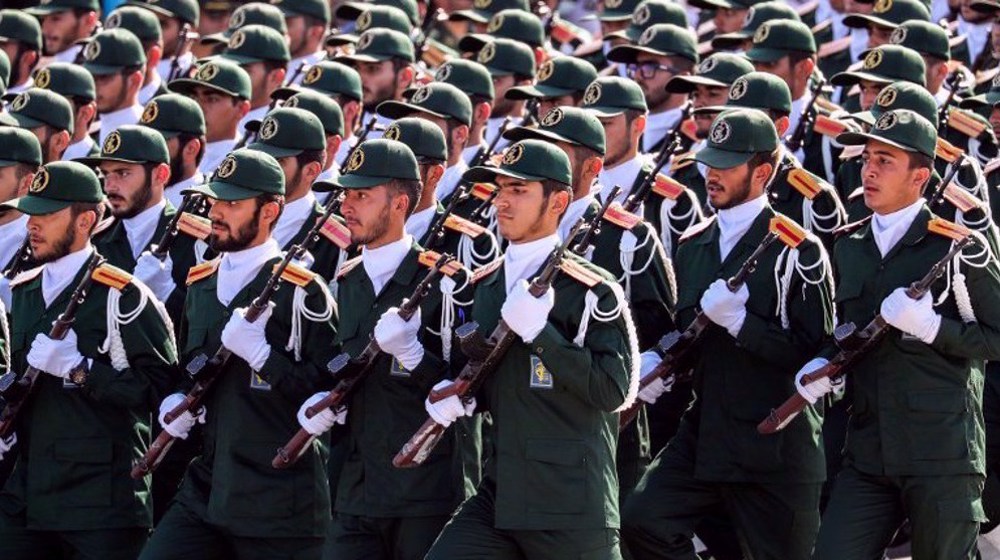Iran seeks constructive marine interaction with Russia: Commander
Iran seeks to bolster “good and constructive” marine cooperation with Russia, an Iranian naval commander says.
Captain Mohsen Sheidayee, the commander of a flotilla of Iranian warships, currently on a friendly visit to Makhachkala, the capital city of the Republic of Dagestan in Russia, made the comments in a meeting with the commander of the Russian Caspian Flotilla.
“The purpose of this trip is [to strengthen] good and constructive interaction with the focus on peace,” Sheidayee said.
He noted that the country had succeeded in making great progress by relying on the know-how of young Iranian experts.
“We are proud to have turned threats into opportunities during the time of sanctions,” he added.
The Russian commander, for his part, commended Iran’s remarkable progress achieved in the naval industry thanks to the country’s domestic expertise and capabilities.
He stressed the importance of promoting hope, friendship and peace among the Caspian Sea littoral states.
The Iranian naval fleet, comprised of the domestically-manufactured Damavand destroyer and missile-launching frigate Derafsh, berthed off the port of Makhachkala, on Thursday.
The flotilla is the fourth fleet dispatched by the Iranian Navy to its northern waters. The Navy has previously sent three fleets to Russia and one to Azerbaijan.

The Caspian Flotilla is the oldest Russian military fleet stationed in the Caspian Sea.
Iran Navy fleet returns home after five-month voyage
Meanwhile, the 44th flotilla of the Iranian Navy successfully ended its five-month mission in the high seas and returned home on Saturday.
The flotilla, consisting of the Alvand destroyer and the Bushehr logistic support vessel, succeeded in circumnavigating the African continent and sailed into the Atlantic Ocean for the first time in November 2016.
The 44th fleet embarked on a voyage for the high seas on October 5, 2016 to safeguard maritime routes used by the country's vessels and oil tankers against pirates.
It first crossed the Gulf of Aden and then docked at Tanzanian port city of Dar es Salaam on October 29, 2016 and remained there for three days. It later sailed through Mozambique's maritime border.
In February, Iranian naval forces successfully saved one of the country’s merchant vessels in the strategic strait of Bab el-Mandeb from a Somali pirate attack. The Somali pirates, on board 11 speed boats, sought to attack the Iranian ship at the mouth of the passageway to hijack it.
However, the timely presence of the 44th flotilla of the Iranian Navy forced the pirates, who have acquired massive refueling and support boats as a result of their hauls, to flee.
Read more:
- Iran Navy fleet enters Atlantic Ocean for first time
- Iran Navy repulses pirate attack in Bab el-Mandeb
The 44th flotilla also saved two Iranian ships from three pirate attacks in the Gulf of Aden on October 17, 2016.
In recent years, Iran’s Navy has increased its presence in international waters to protect naval routes and provide security for merchant vessels and tankers.
In line with international efforts against piracy, the Iranian Navy has been conducting patrols in the Gulf of Aden since November 2008, safeguarding merchant containers and oil tankers owned or leased by Iran or other countries.
Iran’s Navy has managed to foil several attacks on both Iranian and foreign tankers during its missions in international waters.
Pakistani flotilla to dock in southern Iran
Elsewhere, a Pakistan Navy’s flotilla of warships is scheduled to berth at the southern Iranian port city of Bandar Abbas on Sunday for a three-day stay.
The Pakistani mission, comprising Navy ships Tippu Sultan and PNS Jurrat, will dock at Bandar Abbas in line with Tehran-Islamabad maritime interaction and with the purpose of strengthening the existing relations between the two countries, the Associated Press of Pakistan reported.
In October 2016, the 43rd flotilla of the Iranian Navy participated in a joint relief and rescue drill with Pakistani naval forces in waters off the port city of Karachi. It was consisted of Lavan logistic warship, Falakhan and Khanjar missile-equipped warships, Konarak troop-carrier warship and a domestically-manufactured helicopter.

Several exercises were carried out during the joint maneuver such as search and rescue training, helicopter vertical reference training, telecommunication exercises using flags, lights, radiographs and the formation and combination of the surface vessels of Iran and Pakistan.
Read more:
VIDEO | Report flags India’s violation of rights of Rohingya detainees
Turkey's foreign minister meets Syria's de facto leader in Damascus
'Next to impossible' to rescue patients from Gaza's Kamal Adwan Hospital: Director
VIDEO | Vietnam current prosperity
Report blames gasoil exports for shortage at Iranian power plants
VIDEO | Hind Rajab Foundation names Israeli war criminals vacationing after Gaza genocide
VIDEO | Australians rally for Gaza ahead of Christmas festivities
VIDEO | Attacks on Sana'a










 This makes it easy to access the Press TV website
This makes it easy to access the Press TV website